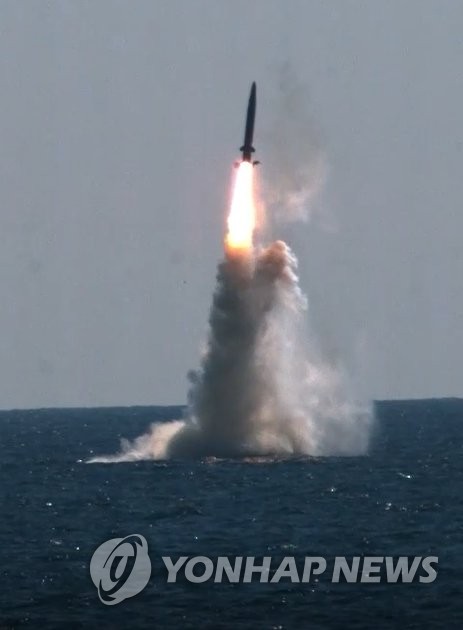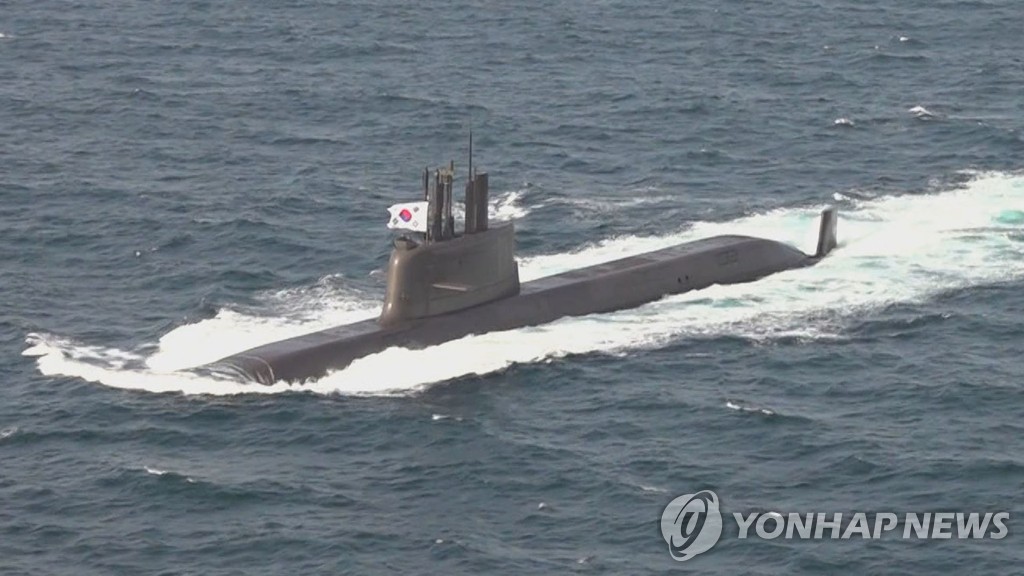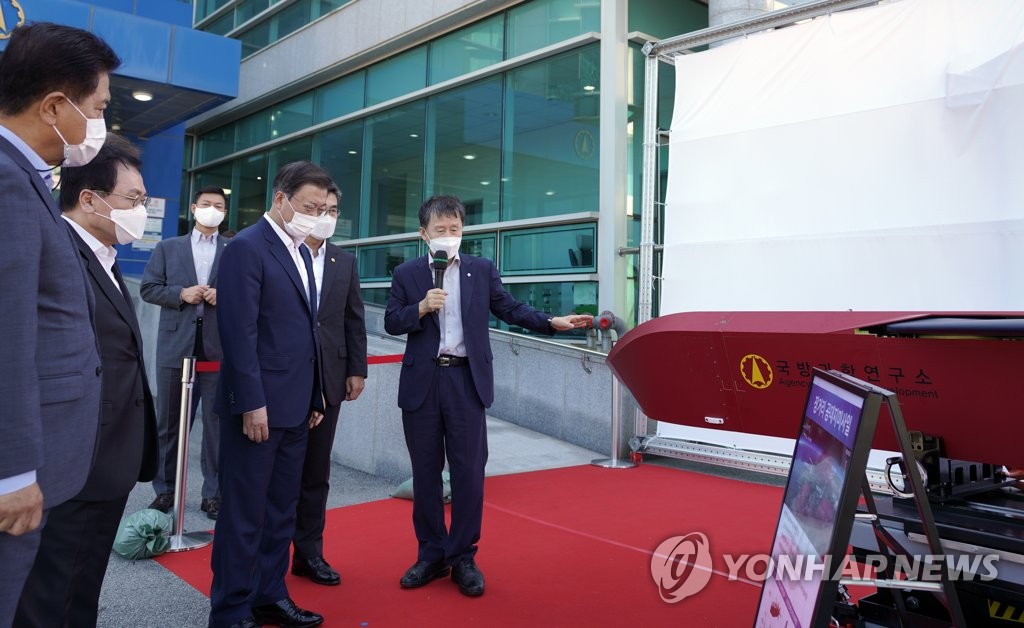- California Assembly OKs highest minimum wage in nation
- S. Korea unveils first graphic cigarette warnings
- US joins with South Korea, Japan in bid to deter North Korea
- LPGA golfer Chun In-gee finally back in action
- S. Korea won’t be top seed in final World Cup qualification round
- US men’s soccer misses 2nd straight Olympics
- US back on track in qualifying with 4-0 win over Guatemala
- High-intensity workout injuries spawn cottage industry
- CDC expands range of Zika mosquitoes into parts of Northeast
- Who knew? ‘The Walking Dead’ is helping families connect
S. Korea succeeds in testing ballistic missile launch from submarine: Cheong Wa Dae
South Korea has become the world’s seventh country with an indigenous submarine-launched ballistic missile (SLBM), as it succeeded in an underwater test-launch from a submarine, Cheong Wa Dae announced Wednesday.
President Moon Jae-in inspected the firing at a local test center of the Agency for Defense Development (ADD), hours after North Korea lobbed two ballistic missiles into the East Sea.




President Moon Jae-in inspects the underwater test-launch of South Korea’s indigenous submarine-launched ballistic missile (SLBM) at the ADD Anheung Test Center in South Chungcheong Province on Sept. 15, 2021, in this photo provided by Cheong Wa Dae. (PHOTO NOT FOR SALE) (Yonhap)
The SLBM was fired from the 3,000-ton-class Dosan Ahn Chang-ho submarine at the ADD Anheung Test Center in South Chungcheong Province.
It flew a planned distance and precisely hit a target, Moon’s office said.
“Possessing SLBM is very meaningful in terms of securing deterrence against omnidirectional threats and it is expected to play a big role in self-reliant national defense and establishment of peace on the Korean Peninsula, going forward,” it said in a statement.
The ADD earlier carried out several ground- and water tank-based SLBM tests, including ejection ones.
Currently, only six countries have SLBMs with actual field operation capabilities that have high strategic values and are difficult to develop, according to Cheong Wa Dae. They are the United States, Russia, China, Britain, France and India.
North Korea claims to have developed a homegrown SLBM. But the South’s military officials said that the North seems to have been successful in just the ballistic missile firing from a floating barge, not any underwater launch from an actual submarine.
In addition, the ADD succeeded in a long-range air-to-ground missile separation test for use by the KF-21 next-generation fighter jet, which South Korea is developing with its own technology, Cheong Wa Dae said.
It means South Korea has secured an aerial missile launch technology, an essential element for fighter jet armament, the office added.
The ADD also briefed the president on progress in the development of two other strategic weapons — a supersonic cruise missile and a high-powered ballistic missile with significantly increased warhead weight.
In July, the state agency had a successful combustion test of a solid-propellant engine for space rockets. It is designed to put small satellites into a low Earth orbit.












